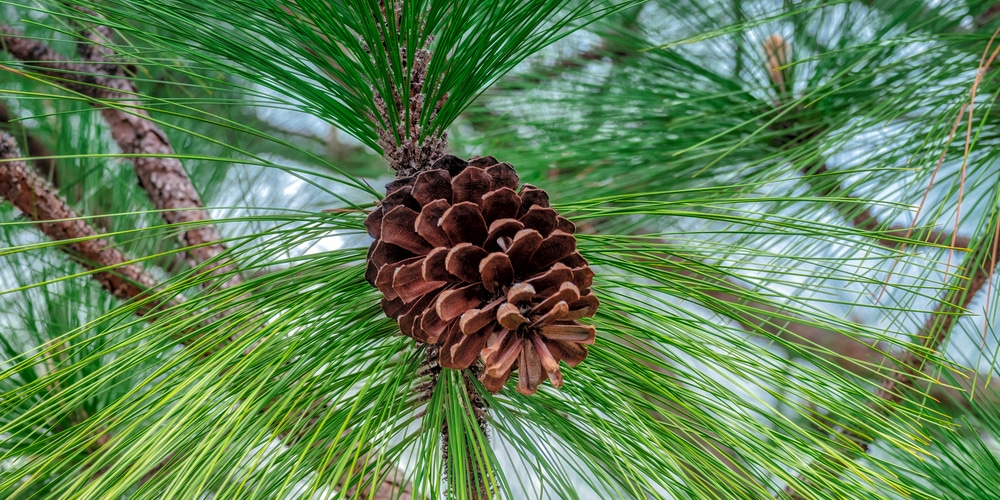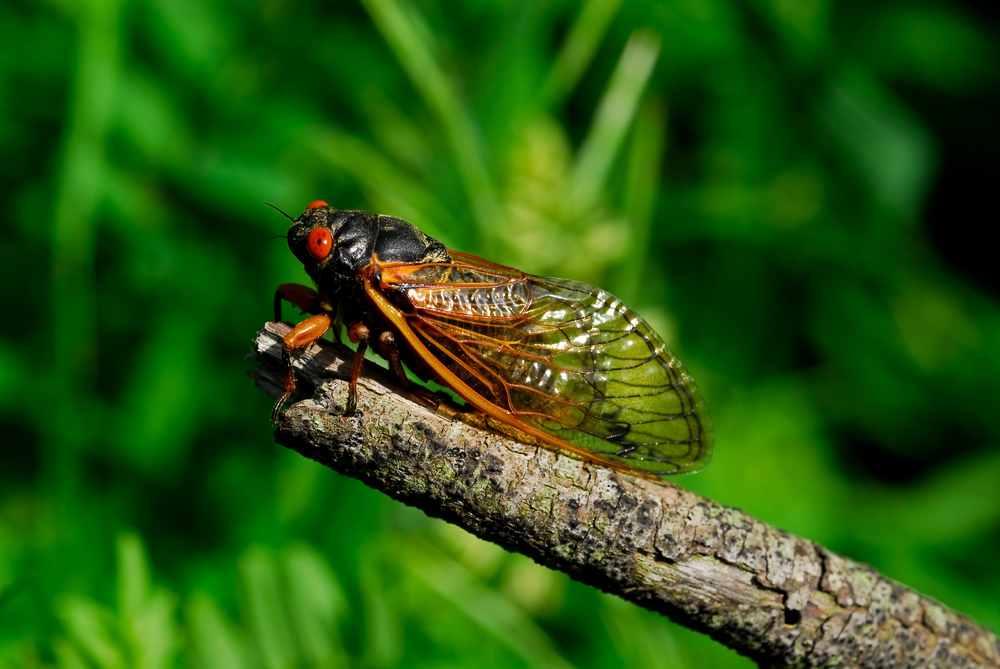It’s summertime and the year that the cicadas hatch. So whether you find these noisy, little guys cute and charming or utterly disgusting, either way, they’re here for the summer. However, some questions you may have is do cicadas like pine trees and what type of trees do cicadas like to make their homes?
Cicadas and Pine Trees

In most Northeastern locations, pine trees are common. But do cicadas like pine trees? According to entomologist Dan Herms of Ohio State University, cicadas do not particularly like pine trees. Pine trees make great Christmas decorations, but they don’t make good homes for cicadas.
Why Don’t Cicadas Like Pine Trees?
One theory of why cicadas don’t like pine trees is that they dislike the aromatic sap compounds found in coniferous tree species such as pine trees. Pine trees have thick, strong, smelling sap that is perfect for keeping the tree healthy and alive but not ideal for a cicada to nest.
Although the Western Whip Cicada sometimes lays eggs in the branches of a pine tree, as soon as the eggs hatch, they leave the pine tree and look for another, more suitable location to make their home. As the cicadas emerge from the ground beneath, you may also see the exoskeletons left behind on pine tree bark.
What Type of Trees Do Cicadas Prefer?
Cicadas will sit on any tree to sit and sing their loud, harmonious tune, but they do have a preference on the type of trees they prefer. Cicadas typically like deciduous trees such as oak, maples, beech, dogwood, and fruit trees.
They like a tree with a branch size that is easy for them to sit on, which proves to be about ½ – ¼ of an inch thick. Deciduous trees are generally larger in size; therefore, their tree branches make great sitting posts for cicadas. They also lay their eggs on the branches of a tree, so having a good, sturdy branch is desirable.
Do Cicadas Damage Trees?
Cicadas are rather large insects, so it’s a common concern whether or not cicadas harm the trees they inhabit. Although they don’t typically cause too much damage, there are two points in a cicadas life span where they could cause some damage to the tree. One is when they are nymphs and feed on the tree roots, and the second is when the females lay their eggs on the tree branches.
Nymphs feed on the tree roots they inhibit, so a feeble, weaker tree may experience some damage from this activity. In most cases, however, little to no damage is done to the tree from cicadas feeding.
When female cicadas lay their eggs inside a tree branch, this could cause damage to the branch itself. Still, large, sturdy trees generally experience any long-lasting effects from this type of damage. The trees most susceptible to damage from cicadas are young saplings and trees already in a weak state.
Do Cicadas Like Pine Trees: In Conclusion
Cicadas prefer large, deciduous trees with sturdy branches, ideal for laying their eggs. Pine trees are too sappy and give off an aroma that the cicadas don’t like. So if it’s damage to your pine trees that you’re worried about this cicada brood, fear no more.
